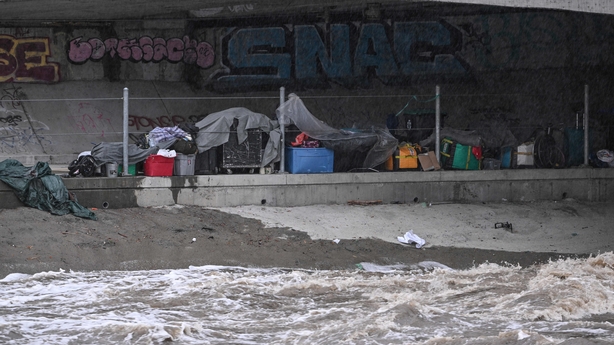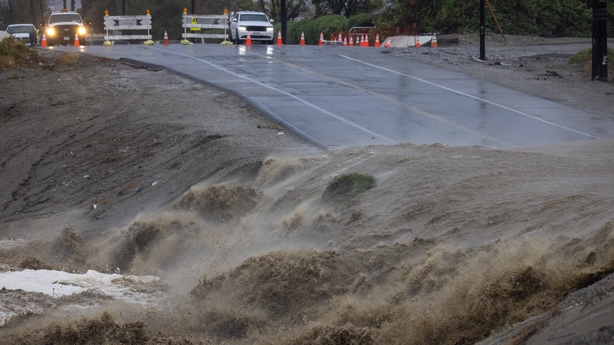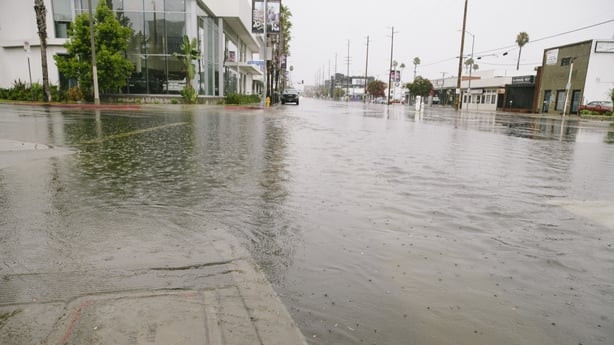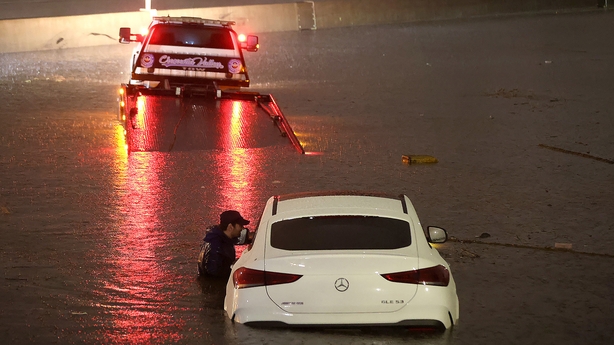Parts of southern California and the US southwest face the threat of flash flooding along with landslides and mudslides after Tropical Storm Hilary brought record-breaking rainfall.
Some 17 million Americans are under flood and high-wind advisories, watches and warnings as remnants of the storm move north, dumping heavy rains from the California-Mexico border up through Las Vegas and into parts of the northwest, the National Weather Service said.
One of the hardest hit communities has been Palm Springs, California, where video footage posted on social media showed flooded streets and debris.
Mayor Grace Garner told CNN the city's emergency phone system was knocked out by the storm.
"Right now we have flooding on all of our roads. There's no way in or out of Palm Springs, and that's the case for the majority of the Coachella Valley. We're all stuck," she said.
Hilary has been downgraded to a post-tropical cyclone.
Some mountain and desert areas could see rain accumulation totals of 12-25cm, as much as the deserts typically see in a year, forecasters said.
Los Angeles, the second-most populous city in the United States, experienced flooded streets and downed trees and power lines in some neighbourhoods, according to officials, who urged residents to stay vigilant.

The rain is expected to slowly dissipate in southern California, but officials warned residents not to let their guard down as dangerous flooding could wash away roads and inundate neighbourhoods.
"The ongoing and historic amount of rainfall is expected to cause life-threatening to locally catastrophic flash, urban and arroyo flooding including landslides, mudslides and debris flows today," the weather service said.

Some 400 flights in and out of airports across the southwest were cancelled or delayed this morning, including 100 landing at and taking off from San Diego International Airport, according to Flightaware.com.
California Governor Gavin Newsom declared a state of emergency for much of southern California while President Joe Biden ordered federal agencies to move personnel and supplies into the region.
The hurricane season is in full swing#Franklin threatens heavy rain in Haiti, Dominican Republic, Puerto Rico
— World Meteorological Organization (@WMO) August 21, 2023
Gert and Emily will be short-lived#Hilary is a "post-tropical cyclone" but threatens dangerous flooding in SW USAhttps://t.co/nr1pQlRTJx#EarlyWarningsForAll pic.twitter.com/LohDJEjuwi
Before striking the US southwest, the storm passed northward through Mexico's Baja California peninsula.
It killed at least one person in Mexico, triggered flash flooding and swept away roads.
The system crossed the border yesterday.
It was the first tropical storm recorded in San Diego County and the first to hit Los Angeles County since 1939.
As the region prepared for the storm yesterday, a magnitude 5.1 earthquake hit southern California north of Los Angeles.

In Ventura County, northwest of Los Angeles, Fire Department Captain Brian McGrath told CNN that the bulk of the rain had passed through the county with no significant road closures, although authorities were surveying for any extra storm or earthquake damage such as fallen trees.

Hurricanes hit Mexico every year on both its Pacific and Atlantic coasts.
Although the storms sometimes affect California, it is rare for them to strike the state with much intensity.
Scientists have warned that storms are becoming more powerful as the world gets warmer with climate change.
"We have to also look at what is the change in the climate doing to these severe weather events," Deanne Criswell, the Federal Emergency Management Agency (FEMA) administrator, told CNN.
"What is the risk going to look like into the future?"
